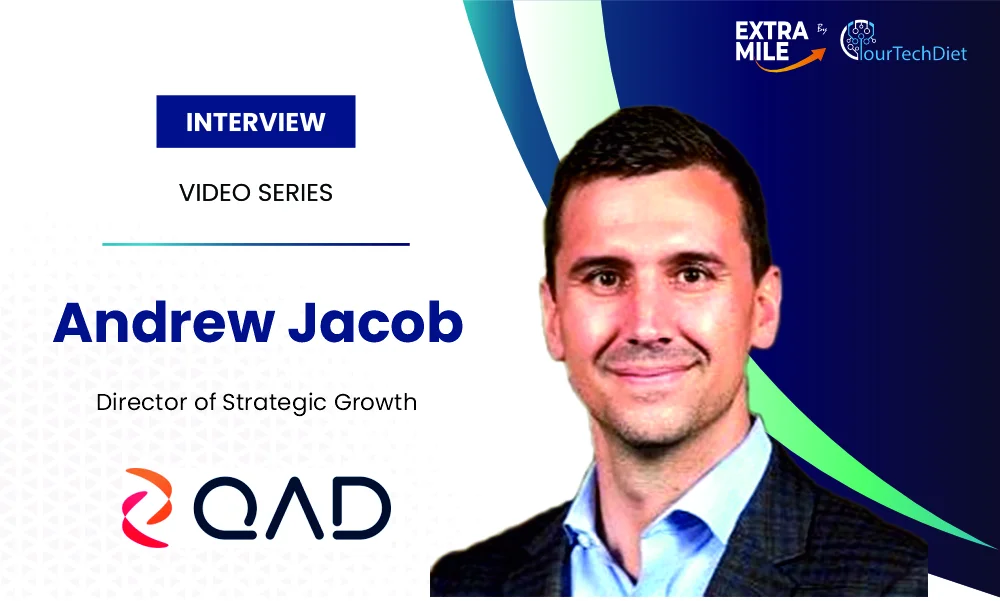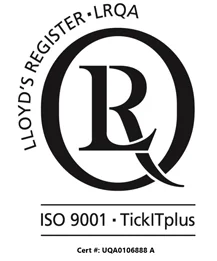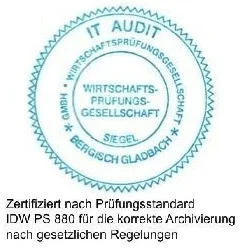Hello and welcome back to another episode of ExtraMile by YourTechDiet, where we aim to learn and examine the emerging technologies, marketing trends, and more. I’m your host, Sudakshina, and we are here today to unlock the potential of ERP with Andrew Jacob, Director of Strategic Growth- Planning and Scheduling Solutions of QAD. The firm is determined to create full-featured manufacturing ERP software and software solutions while assisting companies to grow.
Let us explore Andrew’s point of view on the emerging trends in the manufacturing sector alongside gaining knowledge of his professional journey.
We’re excited to have you with us today, Andrew. A very warm welcome.
When I first started on this journey, I got into sales pretty much straight out of university, and it was kind of interesting to see where the market was and is headed, and my journey has mirrored that. So, cloud technology was brand new when I graduated in 2008. It really was an emerging category, and I was one of the first employees at DocuSign that really pioneered the idea of electronic signatures, electronic contract management in the cloud.
So, what was interesting about that journey is I got kind of a front row ticket to the growth of SaaS, to the growth of cloud computing, and where that has become isn’t just cloud technology that’s always on, always available. It’s really developed into all these different industries and areas for growth. If you think about where we’re headed with AI, with agentic AI, and how we can apply that to so many unique challenges and problems, a lot of that really is SaaS industry and cloud computing.
Host: Great. Technological advancement has been a key transformation in every sector, including finance and sales also, right? So, with that in mind, if and so, we can move ahead and do our next question.
Following QAD’s acquisition of Phoenix, where you have served as head of sales, you have transitioned into the role of director of strategic growth at QAD. So, what changes have you experienced in terms of responsibilities and have you had establishments of strategic direction of the company in the new role?
Andrew: So really, it’s been a continuation of our vision and of what we were doing at Phoenix. When we set out to build Phoenix, it was about how could we build a technology platform structured around the way that people manage, plan, and schedule their manufacturing facilities. I think what’s unique about the opportunity here at QAD and a continuation of what I was already working on, is QAD’s worldview, our vision for what the customer needs to accomplish is very similar to how we thought about it at Phoenix
But I’m working on many of the same problems. I’m working with oftentimes the same types of buyers and companies that I was working at with Phoenix and really, it’s just probably a continuation of that experience in that we have more development resources. We have more product resources.
And QAD has this vision for an industrial transformation platform. So, if you combine the resources that I have available to me with that platform vision for the industrial transformation platform, it’s a great combination to grow off of and build for our customers.
Host: Amazing. Great, actually. Like, it is really crucial to adopt a strategic approach while fulfilling a diverse set of responsibilities.
So, your industry 4.0 brought automation. On the other hand, industry 5.0 is set to focus on human-centric and sustainable manufacturing. How do you see such approaches reshaping production methods and meeting the expectations of the users? Can you share any real-world applications of the industry 5.0?
Andrew: Yeah, absolutely. So, I think one of the things that QAD does uniquely is we focus on people, process, and systems. And there’s, of course, a lot of buzz in the industry about AI.
And I mentioned agentic AI earlier. That promise really hasn’t been fulfilled yet in supply chain. And the reason for that is when you look at the way that people manage their supply chains, and I’m sure we can talk about some of the trends in that later in this episode, but one of the big things that I’m observing right now is fragmentation.
So, there’s fragmented processes, there’s fragmented systems. In the background, we all know that we want to use AI to solve some of these problems. But the way that large language models have been structured, they really don’t align with the challenges that we’re seeing currently with fragmentation in the supply chain business.
So, if you plugged chat GPT into a company’s ERP systems, it would fail miserably. What does work and what works very effectively is applying machine learning to very specific tasks and problems within that supply chain. So to give you an example of one thing that we do in the area that I focus in, which is advanced planning and scheduling, if I use a heuristics model, if I combine that with this sophisticated machine learning forecast running in the background, if I have great people, if I have reasonably good processes, and a good model that helps me explain drift or bias, or take a few different unique data sources and combine that into a forecast, I can get really great results on that. I can use agentic AI in the background to help explain to me insights within that model that I might not be able to glean out as a supply chain executive.
Am I going to get the whole picture of my universe right now, today? Probably not. But I can do some really unique and interesting things today within machine learning that will be highly effective.
And that’s what we’re focused on right now.
Host: Great. This Industry 5.0 really brings these possibilities beyond expectations. Shifting our focus to supply chain management, planning, demand, distribution, production, procurement are crucial layers of supply chain management.
So, what role does scheduling play in layer optimizing efficiency and mitigating risks?
Andrew: Yeah, I think that’s a challenge that every company faces today. So, what’s interesting to me is we got out of COTE, and we were done with supply chain disruption. We had crossed that bridge, supply chains felt pretty stable.
From there, we entered a pretty long period of inflation. If you look at some of the themes that have been emerging recently, it’s political risk, right? So, I think four years ago, if you had asked people, well, will tariffs be a long-term consideration for my business that I need to plan around and schedule around and figure out how I’m going to make business decisions around?
That probably wouldn’t have been on anyone’s radar as a top threat. It certainly is today. So figuring out how we make resilient supply chains that are increasingly probably a little bit more localized than they were in a previous era is very important.
And having the right technology infrastructure to build your forecast, to plan around that, to plan your production forecast and your production schedule, that’s really the area that I’m focused on. So that’s where macro problems become a solvable problem that you can take technology and really apply it to how we build a durable business for the future.
Host: Okay, so moving forward to the next question. Manufacturing includes several stages and resources. What is the significance of appropriate enterprise resource planning, ERP, in this regard?
Andrew: Yeah, ERP is really important. And I mentioned QAD and our focus on the industrial transformation platform. So, within that, there’s three focus and core value sectors within our business.
There’s ERP, which is QAD’s lineage and pedigree as we started as an ERP company. We have supply chain and connected workforce. You really need ERP as a system of record within your business.
It really is the base that you’re managing on all your financials, your production rates, how you collect and aggregate your customer orders, so your bill of materials. All of that matters and is important, right? So having that as your source system is critical to our customers and to our business.
Where we believe we can build off of that and create differentiated value for our customers is combining that capability and expertise that we have in our ERP with our focus on the industrial transformation platform. And that means connected workforce. So having good line of sight in how your manufacturing facilities are actually producing, having supply chain technologies that help you manage and plan your forecast around that to schedule your manufacturing facilities, which is where I focus.
So, all of that together matters. And the best companies are winning by combining capabilities in all three to having a really good 360 view of their business, not just what they’ve done, but how they’re producing and continuously refining that picture.
Host: So, what is Pragmatic AI? What opportunities does it offer to businesses, especially to manufacturers? Can you share any use cases to understand the potential of Pragmatic AI in manufacturing?
Andrew: Yeah, what Pragmatic AI means to me is AI that’s user focused and user centric. And it’s pretty self-explanatory in the title, right? Like Pragmatic means that you can use it.
So, it’s very focused on the user experience. So, to give you a few examples of this, we’re very focused on what we call champion AI for our connected workforce solutions right now. And what this means is that if I have a production run, and let’s say I improved my OEE and productivity rates by 1% overall in my previous baseline numbers, I can actually query that data, understand how and where I performed better.
Or if I need to learn how I’m doing against my, I’ll use one specific example here. Let’s say a specific piece of machinery is down or having reduced performance. I can query that and determine what’s that root cause analysis of why that machine is underperforming.
So, there’s just two examples of what we’re doing to make agentic AI useful to those people that are on the ground floor in the factory doing things. You have to make user-centric and that’s really how we’re focused on it.
Host: Pragmatic AI is surely revolutionizing manufacturing activities then.
Moving ahead, why should manufacturing companies prioritize incorporating effective risk management strategies? Which challenges or risks can emerge for manufacturers if they fail to integrate appropriate risk management tactics?
Andrew: Yeah, risk is paramount in the supply chain, right? So, risk is everywhere. I have supplier risk.
I have risk in carrying too much inventory. I have risk in carrying the wrong inventory. I have risk in compliance.
So, we work in a lot of regulated businesses as well. So, I define risk as an existential threat to business in the supply chain. How I think about risk is how can I plan and schedule around that?
To give you an example of a use case that we see all the time in planning and scheduling, I have customers that regularly face either material disruption or they face disruption further downstream in their supplier, in their transportation networks. How I schedule around that is really important. I’m constantly balancing trade-offs of do I service customer A over customer B?
If I’m out of a precursor chemical that I use in a specific set of products, how should I schedule around that? Should I make another set of products? And when should I do that?
So, balancing those risks and figuring out how I manage those trade-offs is just another day in the supply chain world for logistics and supply chain planning professionals. It’s really core to how we think about effective solutions that serve my customers and their constituents.
Host: That was really a great insight. So, with that, we end our final question also. So, thank you for joining us, Andrew.
It was really a pleasure to have you with us. You’re really having a valuable conversation. So, the insights you have shared on manufacturing, supply chain management and risk mitigation are nothing but priceless for us.
Andrew: Oh, awesome. Well, thank you for having me. I really enjoyed this.
Thank you. Take care.
Host: Thank you everyone for joining us. I’m your host Sudhakshina, signing off for today. See you in the next episode of ExtraMile by YourTechDiet with our new guests and leaders sharing their wisdom with us.
Until then, stay tuned.






